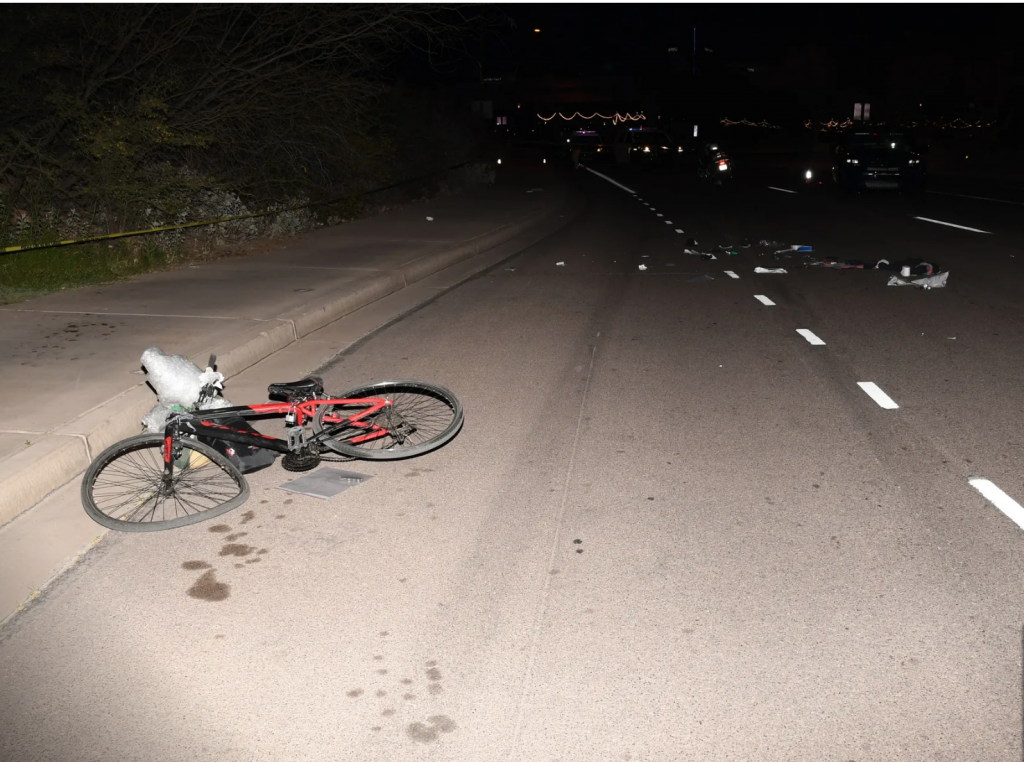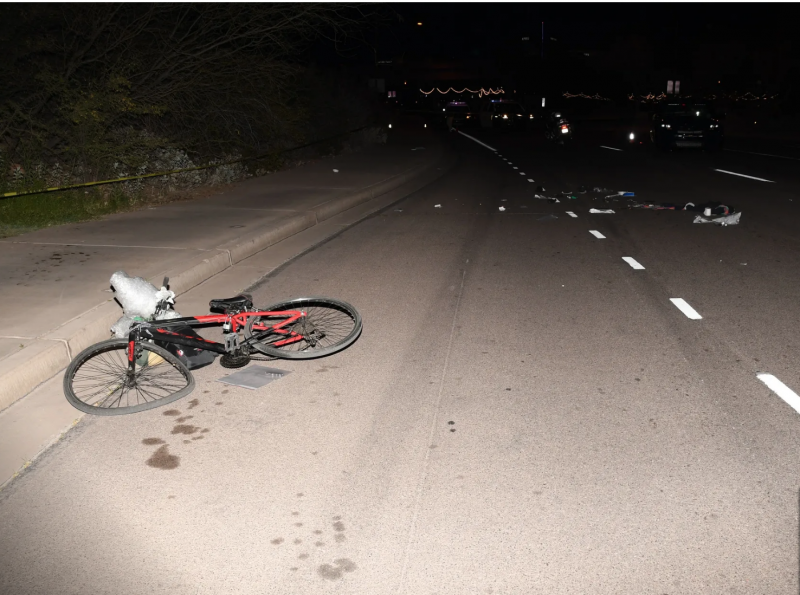
Elaine Herzberg’s bicycle after she was struck crossing a street in Tempe.
Scarce Answers on Liability or Future Controls on Self-Driving Cars
Three weeks before a fatal accident in Tempe, Arizona, in which a pedestrian was killed by an autonomous vehicle owned and operated by Uber, the company proudly released a report that its AI-programmed vehicles had recorded 5 million accident-free miles.
Then a 49-year-old woman, Elaine Herzberg, walked her bicycle onto the path of an Uber test vehicle and was struck and killed. One year later, it remains unclear who is to blame, whether someone should be found guilty of negligence or if anyone will be held responsible. The case involves two Arizona counties and some very sketchy details that need to be addressed. Ryan Randazzo of the Arizona Republic wrote an in-depth story about the accident and how it needs to be brought to a final conclusion before anyone else is harmed by this technology.
Without laying every detail of the crash, the safety driver on the test drive, Rafaela Vasquez, had been watching her phone screen instead of the road at the time of the crash.
Regulations on self-driving cars in Arizona weren’t instituted in 2015 when newly elected Arizona Gov. Doug Ducey welcomed self-driving vehicles to drive on Arizona streets.
“Companies like Uber and Lyft are innovative, entrepreneurial technologies, and I want to see those companies thrive,” Ducey said at the time. “They also create jobs. That’s something we want to see more of, not less.”
The managers of Google’s Self Driving Car Project, now called Waymo, was eager to jump into Arizona and start testing its cars. A short time later Uber notified Ducey it would also like to start testing in Arizona.
But they did it on the down-low. The public was not kept in the information loop. After Uber got into a dispute with California officials, they packed up and moved their AI cars to Arizona. Ducey was thrilled to have them and said so at a press conference.
Then came the accident that killed Elaine Herzberg. According to police reports, the driver commented, “This is going to be a setback for the whole industry, which is not what I want.” Vasquez spoke to Loehr, the investigating officer on the scene.
“There’s a hypothetical possibility that it could go criminal,” Loehr said. “I don’t foresee it going that way.”
Even before news broke about this fatality, the public had begun to resent and even target self-driving vehicles.
Chandler and Tempe police records showed some of the vans were followed, some drivers harassed. In late 2017, a man threw rocks at two Waymo self-driving vans.
Further police reports stated that after conducting a simulation of the accident they found had the driver been paying attention, she could have stopped the car 42.6 feet before the impact. But Vasquez didn’t brake until after the crash.
Volvo used a system called City Safety Technology which, when activated, tended to cause a jerky ride because it stopped or slowed down when it encountered objects it could not identify. So Uber disconnected it in the test cars.
After their testing, the police made a statement about their investigations. They tested what the vehicle saw. They totaled up the raw data concerning driver awareness and other contributing factors.
“For these reasons,” Detective Kasey Marsland wrote in his analysis, “the crash was deemed entirely avoidable.”
Then, the Maricopa County Attorney’s Office examined Tempe’s findings but referred the case to the Yavapai County Attorney’s Office after citing a possible conflict of interest because the office had partnered with Uber previously.
Yavapai County Attorney Sheila Polk issued a press release. Attached was a letter addressed to Maricopa County.
“After a very thorough review of all the evidence presented, this office has determined that there is no basis for criminal liability for the Uber corporation arising from this matter,” Polk wrote.
Now one year later, Phoenix streets are still being used by several companies to test vehicles, including Uber.
So two county attornies, several police agencies and the Governor of Arizona still have not been able to decide who is at fault, if anyone, or if there will be consequences.
On March 19, the 1-year anniversary, the family of the woman killed by the Uber test car, filed a lawsuit against the City of Tempe for allowing Uber to operate on its streets with no safety requirements. The plaintiffs had sought a $10 million settlement previously. In the lawsuit, the family is seeking a jury trial. The lawsuit cited three counts of negligence.
According to the website TheDrive, autonomous car companies should glean 10 lessons from the accident and its aftermath.
read more at the Arizona Republic








Leave A Comment